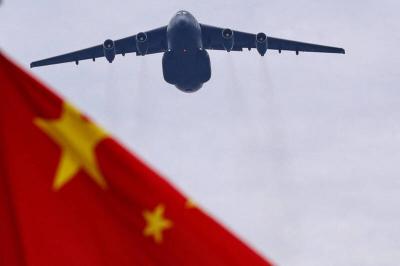About 10 percent of the nation’s emergency room (ER) doctors leave their profession 10 years into their practice, causing a serious manpower shortage, according to a study published at a medical conference yesterday.
ER doctors give up their practice for many reasons, including the flawed payment system under the national health insurance system and having to work in a perennially high-stress environment, said Lee Yi-kung (李宜恭), chief of the Emergency Department at Buddhist Tzu Chi General Hospital in Chiayi’s Dalin Township (大林).
“We found that ER doctors quit their practice more often than hospital-based doctors specializing in other fields,” Lee said at this year’s Annual Conference of the Taiwan Society of Emergency Medicine.
Lee and his team surveyed 1,721 registered ER doctors nationwide and followed their careers from 1997 to 2010. They found that during the 13 years, 10 percent of the doctors have either retired or changed their specialty.
The turnover was higher than that of doctors with other hospital-based specialties, like radiology, pathology and anesthesiology.
“The study results yield several implications,” Lee said, urging health authorities to pay attention to the brain drain situation in emergency rooms.
With 1,100 ER doctors taking care of 6 million patients per year, Lee said that an increasing workload resulting from the brain drain could drive even more doctors away.
The present ER doctor-patient ratio is already short of the 1:5,000 standard set by the Department of Health, he added.
“Being an ER doctor is a profession that requires accumulation of experience,” he said.
Unfortunately, the national health insurance system, which covers 99 percent of the population, does not recognize that, Lee added. ER doctors, for example, are only paid NT$400 (US$13) for conducting an intubation, a process that is done under high stress and requires intense concentration, he said.
The two-day conference, themed Refining Emergency Medicine Specialty through Excelling Medical Education, attracted physicians from China, Hong Kong and Canada.

Beijing could eventually see a full amphibious invasion of Taiwan as the only "prudent" way to bring about unification, the US Department of Defense said in a newly released annual report to Congress. The Pentagon's "Annual Report to Congress: Military and Security Developments Involving the People's Republic of China 2025," was in many ways similar to last year’s report but reorganized the analysis of the options China has to take over Taiwan. Generally, according to the report, Chinese leaders view the People's Liberation Army's (PLA) capabilities for a Taiwan campaign as improving, but they remain uncertain about its readiness to successfully seize

HORROR STORIES: One victim recounted not realizing they had been stabbed and seeing people bleeding, while another recalled breaking down in tears after fleeing A man on Friday died after he tried to fight the knife-wielding suspect who went on a stabbing spree near two of Taipei’s busiest metro stations, Taipei Mayor Chiang Wan-an (蔣萬安) said. The 57-year-old man, identified by his family name, Yu (余), encountered the suspect at Exit M7 of Taipei Main Station and immediately tried to stop him, but was fatally wounded and later died, Chiang said, calling the incident “heartbreaking.” Yu’s family would receive at least NT$5 million (US$158,584) in compensation through the Taipei Rapid Transit Corp’s (TRTC) insurance coverage, he said after convening an emergency security response meeting yesterday morning. National

Taiwan has overtaken South Korea this year in per capita income for the first time in 23 years, IMF data showed. Per capita income is a nation’s GDP divided by the total population, used to compare average wealth levels across countries. Taiwan also beat Japan this year on per capita income, after surpassing it for the first time last year, US magazine Newsweek reported yesterday. Across Asia, Taiwan ranked fourth for per capita income at US$37,827 this year due to sustained economic growth, the report said. In the top three spots were Singapore, Macau and Hong Kong, it said. South

PLANNED: The suspect visited the crime scene before the killings, seeking information on how to access the roof, and had extensively researched a 2014 stabbing incident The suspect in a stabbing attack that killed three people and injured 11 in Taipei on Friday had planned the assault and set fires at other locations earlier in the day, law enforcement officials said yesterday. National Police Agency (NPA) Director-General Chang Jung-hsin (張榮興) said the suspect, a 27-year-old man named Chang Wen (張文), began the attacks at 3:40pm, first setting off smoke bombs on a road, damaging cars and motorbikes. Earlier, Chang Wen set fire to a rental room where he was staying on Gongyuan Road in Zhongzheng District (中正), Chang Jung-hsin said. The suspect later threw smoke grenades near two exits